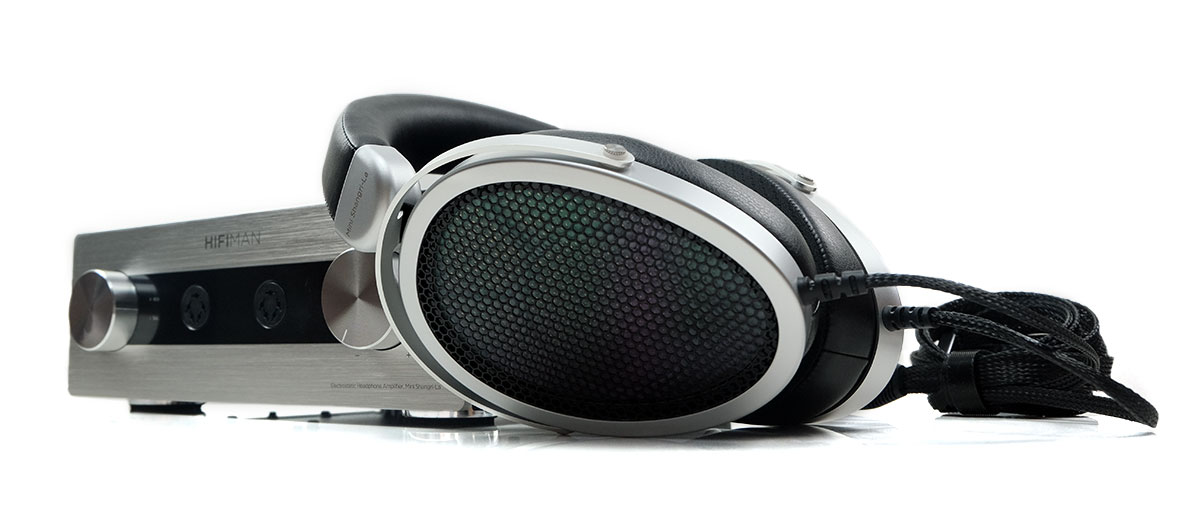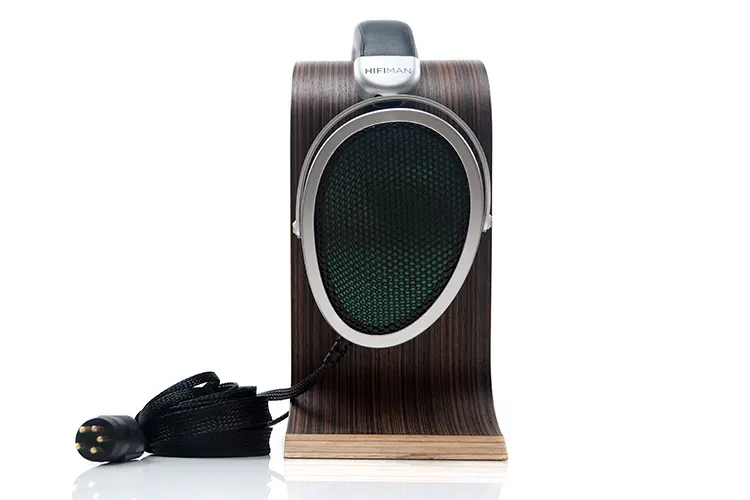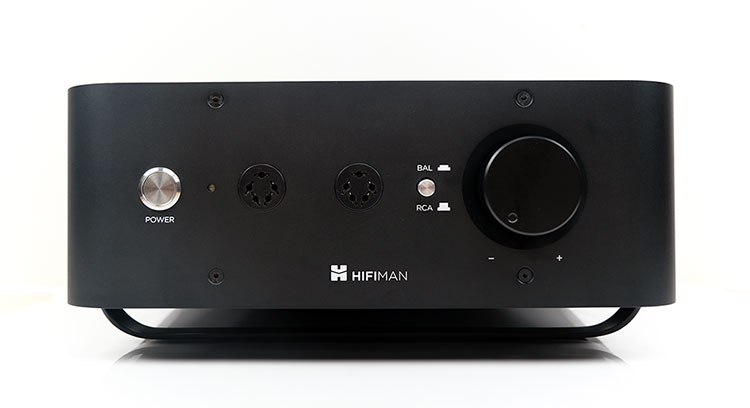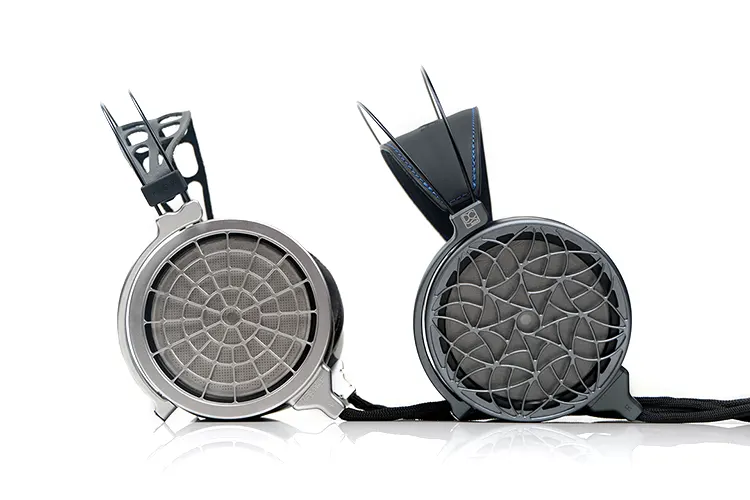Sound Impressions
The following sound impressions of the HIFIMAN Mini Shangri-La were completed with a mix of the Topping DX9 DAC’s balanced analog output and a high gain balanced line-in from the iBasso DX320 MAX Ti.
Summary
The Mini Shangri-La delivers a smooth, mid-forward, and energetic sound signature, a presentation I find tonally more coherent when compared to the older Jade II.
Arguably, it has what I like to define as ‘drive’. Not so much in sub-bass weight and outlandish bass volume where, like many electrostatic systems, it’s lacking.
Rather, it emanates from a thicker mid-to-upper bass response, teasing out beautiful instrumental presence, a degree of warmth, and impressive note sustain.
This is a quality I enjoyed immensely with rock and metal where often the clarity in the guitar chords and some vocals can sound diminished on headphones with a V-shaped turning.
The dynamics are excellent with nuanced detail that is easy to pick out. Nothing sounds congested on this system though its mid-forward tuning means vocals are to the fore creating an intimate central imaging experience.
Some might define the voicing as somewhat shouty but I only find that an issue if the tuning creates too much contrast and edginess to the vocal timbre. You get none of that here with what I can only describe as an ideal headphone for natural vocal coloration.
I would temper this observation with the amplifier pairing for the headphones. With the system amplifier, you get a fairly even-handed to slightly rounded tonal quality so if you are after a typical e-stat clean treble sparkle I would point you to amplifiers such as the now-discontinued Stax SRM-007tII or the diminutive D10.
They do better with upper treble presence (and bass depth) but if you are dealing with brighter recordings this does not always favor those types of pairings.
When testing headphones with stronger 8-10k tuning such as the Stax SR-L300 Limited I found the D10 edgier sounding whereas the Mini Shangri La amplifier retained a wonderfully smooth treble tone.
Frequency Response
From around 100Hz up to almost 2k, the Mini Shangri-La is relatively neutral with perhaps 1-2dB more presence from 100-300Hz, a trait that I believe gives instruments a bit more warmth and body though not necessarily a huge fundamental frequency.
The muted fundamental frequency comes from a roll-off in the headphone’s curve from around 80Hz downwards.
This is a non-too surprising trait of electrostatic headphones with only the Stax SR-007MK2 and Audeze’s CRBN‘s low-end showing above-average low-end presence out of the several e-stat headphones I have tested down through the years.
Arguably, the Shangri-La Jr also has more depth and presence sub-100Hz but you are paying more than double for those headphones so one would expect a better bass extension.
There is a minor dip in the curve from around 1-2k, but it’s not that noticeable in most recordings I tested the system with. I have heard stronger suck outs in this range from the likes of the Jade II and even the Jr is leaner in the same region.
The north of neutral 2-5k dip is the headline act in the Mini Shangri-La’s presentation. If you enjoy fulsome vocals to the fore, then these headphones will deliver them.
Beyond that, there is some treble presence but, save for around 7k, it’s always attenuating about 1-2 dB below what I would define as neutral. Hence the vocals sound evenly weighted, more to the rounded side than sharp or edgy sounding.
Coloration
Subjectively, the Mini Shangri-La is very coherent and smooth-sounding. Once I started comparing it to the Jade II and the Stax SR-L300 Limited, it became pretty clear how balanced the tuning was.
It’s not a high-contrast performance with massive bass dynamics and no, there is nothing like the overt bass bloom or weight you will get if you pair the amplifier with the likes of the SR-007MK2 and the Dan Clark Audio CORINA. These two headphones sound weightier and denser to my ear with this amplifier.
Rather, the Mini Shangri-La system sounds lively, and punchy at times with better bass dynamics than the Jade II, albeit maybe a more neutral mid-bass tuning. Subjectively, The Jade II shades a little for me in terms of low-end presence but at the cost of losing some comparative fullness in the upper bass and mids.
The vocal timbre is perfect for my tastes. I understand that some might prefer they had a more relaxed placement but I like them loud and proud.
They do sound more elaborated with more sustain in their notes compared to the Jade II, helped by a controlled treble that resists adding too much sheen to their harmonic balance. That means you get a big and bold vocal coloration but without a harsh sound.
One more important note on the coloration is the choice of DAC. The amplifier is sensitive to the DAC choice so neutral DACs will give you a flatter bass response and weightier alternatives will create a denser sound on the Mini Shangri-La’s low-end.
Staging & Dynamics
The Mini Shangri-La can deliver a beautifully wide soundstage with, as expected, stellar articulation and excellent resolution to go along with it.
Despite the energy from this amplifier, the headphones retain impressive control so it’s not a messy sound signature with great channel separation, especially from the amplifier’s balanced output.
One thing I want to remark on is just how much more dynamic this amplifier sounds compared to the Jade II system tuning. The new headphones with the old amp had a flatter and more compressed sound when going balanced, almost how I would expect a single-ended output to perform.
Depth is the Achilles heel with the Mini Shangri-La staging shape. It pulls it back from being a truly holographic presentation, though the stellar width and open midrange make up for that.
It does mean I found myself veering more to recordings that I consider mid-centric and more complex sounding rather than heavy-handed EDM and dance recordings. Then again, I have never reached for an electrostatic headphone for dance music save for the SR-007MK2.
Despite what I would call a relaxed treble presence the headroom from the Mini Shangri-La is very good. It might not have the shimmery sparkle that high-end Stax systems can deliver but if you consider those setups fatiguing the Mini Shangri-La is the perfect antidote.
Synergy
The HIFIMAN Mini Shangri-La is marketed first and foremost as a system, meaning it should be seen as a bundle consisting of the amplifier and the headphones.
You can buy either one separately, so it is not an inflexible setup. Just be aware that buying separately is more expensive: the amplifier is $1500, and the headphones are $1100, which is $300 more than the combined system.
However, for those who already own a good energizer or a decent set of electrostatic headphones, there might be some interest in how they perform individually with 3rd party pairings.
Amplifier Pairings
Unlike EST headphones such as the Dan Clark Audio VOCE and CORINA, the Mini Shangri-La headphones are only marginally less sensitive than Stax headphones.
That means smaller energizers like the integrated Stax SRM-D10, which I find a bit limited for headroom with the DCA CORINA and VOCE have no issues driving the Mini Shangri-La headphones.
That being said, the D10 is not as powerful as the Mini Shangri-La amplifier and you can pick up on that right away with a slight loss in drive or dynamic range.
Recordings are crystal clear with more treble sparkle and sheen from the D10 courtesy of its built-in Sabre DAC. However, it lacks the low-end gusto and expansiveness of the bigger amplifier when paired with a good quality line out and vocals can sound a bit leaner on brighter mixes.
The Stax SRM-007tII is a much more capable and refined tube energizer that also pairs well with the Mini Shangri-La headphones.
I will go into more detail on how this amplifier performs in my comparison testing on page 3 but the TLDR is that it has excellent headroom and a stronger sub-bass presence compared to the mid-to-upper-bass warmth of the Mini Shangri-La amplifier.
I would consider the Stax amp a more refined and better equipped for nuanced detail with a blacker background, but it is not as energetic sounding. There is more treble sparkle but it comes with a more neutral midrange imaging experience compared to the HIFIMAN amplifier.
The Jade II amplifier shows its age a bit when pitted against the Mini Shangri-La alternative. We have more detail on page 3 of this review but it sounds muted and less dynamic when comparing the balanced output performance.
Headphone Pairings
The Mini Shangri-La amplifier can easily drive two of my most inefficient electrostatic headphones, the DCA CORINA and VOCE.
I have struggled to get the best pairing with these for headroom without spending big bucks on a Headamp Blue Hawaii. Usually, I revert to a VE Enterprise E Lite which drives them beautifully but has resistor issues so it’s in for repair.
The Mini Shangri-La amplifier is a more than capable replacement. My only issue is the tonal coloration cancels some pairings immediately.
This amplifier is warm and dense sounding through the mid-bass and upper bass with plenty of thickness also creeping into the lower mids. It suits a cleaner more neutral headphone rather than an already warm-sounding alternative.
For example, the CORINA and STAX SR-007MK2 sounded either too dark in the case of the former, or too bloated for the latter when paired with the Mini Shangri-La amplifier.
Bassheads might enjoy the fulsome low-end but it comes at the cost of some midrange clarity or treble headroom in the case of the CORINA. Both need a bit more control and space to breathe and sound optimal.
Better fits were the VOCE, and surprisingly the Stax SR-L300 Limited. I have always considered the L300 Limited darker through the upper mids and wasn’t expecting a balanced presentation from this pairing.
The key is the Stax upper treble which is a bit peaky and glassy sounding with brighter amplifiers such as the D10. With the Mini Shangri-La, it sounded much smoother in the highs with better vocal presence as a bonus.
The VOCE can sound vague in the midrange where this amplifier is strongest. This was a better tonal and imaging pairing than the CORINA. Not as dark, with cleaner vocals.





